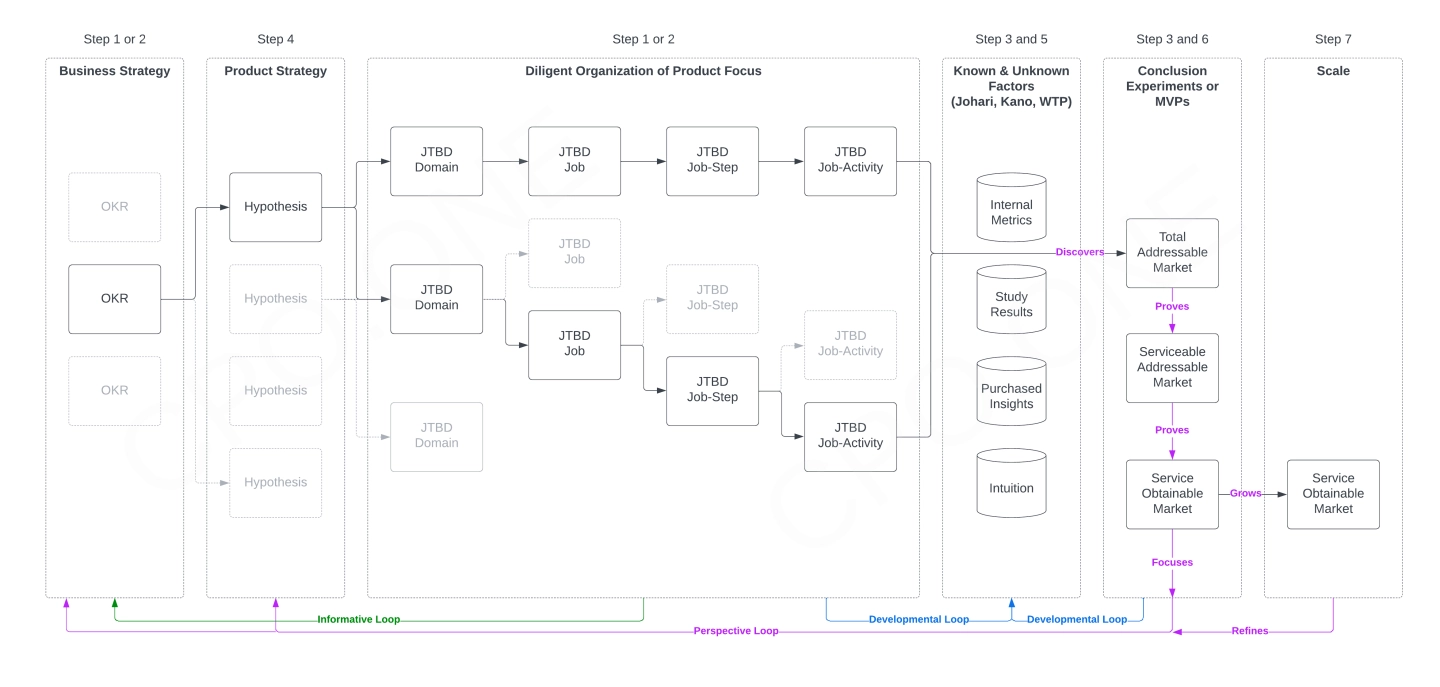July 26th, 2023

- Steps 1 & 2: identify, or receive direction on, the primary target area to pursue a clear and organized perspective within. Develop a map of the abstract job domains through to the uncomfortably specific job activities. Understand what’s hard, slow, inaccurate, and valuable to improve in one or more job activities. Create the objectives and key results (OKRs) necessary to achieve business strategies.
- Step 3: test often with potential customers, gather metrics from existing systems, and research your way into understanding what you do and don’t know, what delightful vs detrimental looks like, and how value is defined and extractable.
- Step 4: create a hypothesis as to what investment of time, money, partnerships, technology, etc are necessary to achieve a valuable outcome that aligns clearly with the OKR. This hypothesis is initially the premise for the MVP and later, as successful, the premise for the GTM strategy to acquire and scale the discovered SAM via the MVP’d SOM.
- Step 5: continuously test to validate that you have customers that are willing to pay for a solution that you have to offer. For a B2B or internal product, this is often a multi-stage process that separates the buyer from the user, or demonstrates WTP through attention and transaction rather than productivity.
- Step 6: develop your conclusion of the hypothesis-based process and solidify a go vs. no-go product.
- Step 7: go to market with continuous refinement and learnings to capture as much SAM as possible through that isolated SOM. If new job-activities are discovered to be needed, valuable, and viable, the hypothesis should be evaluated for updates or splitting based on business strategy.
